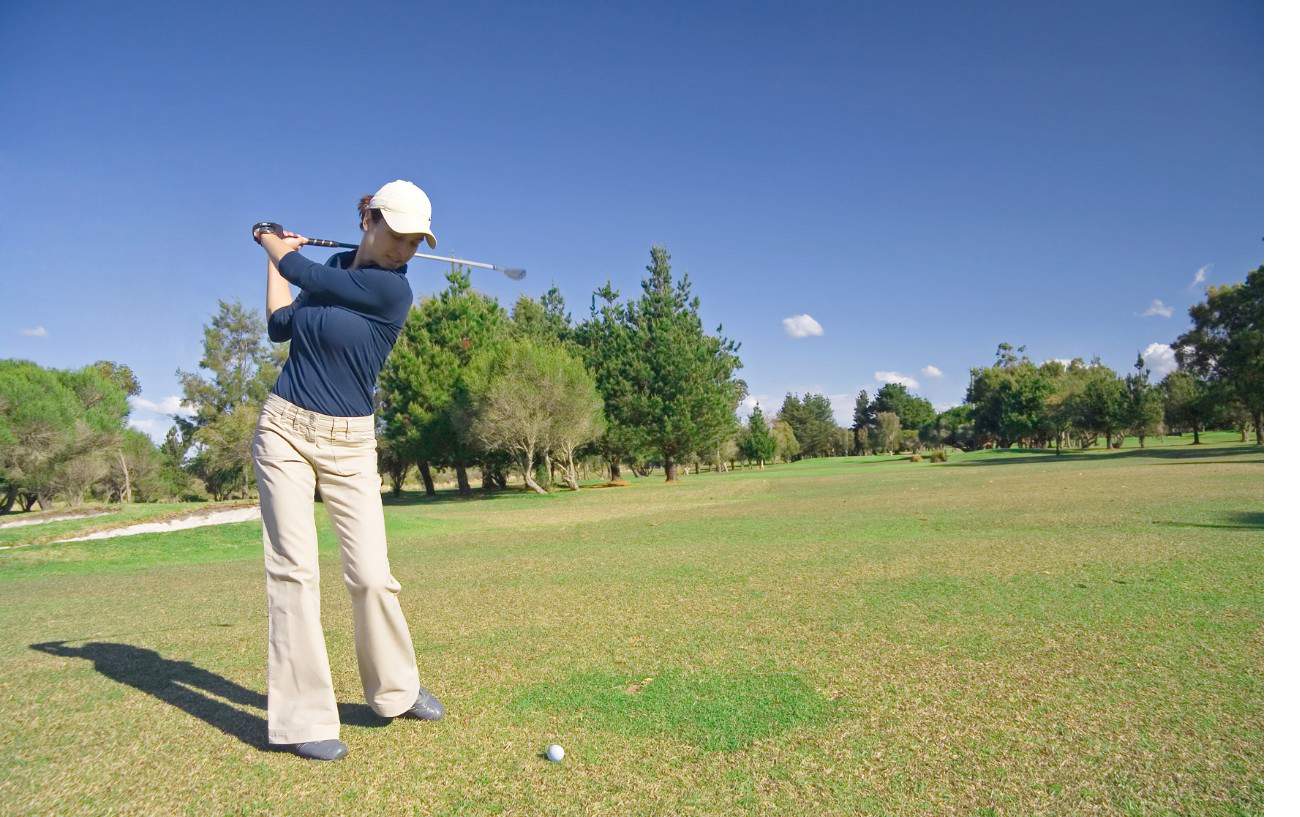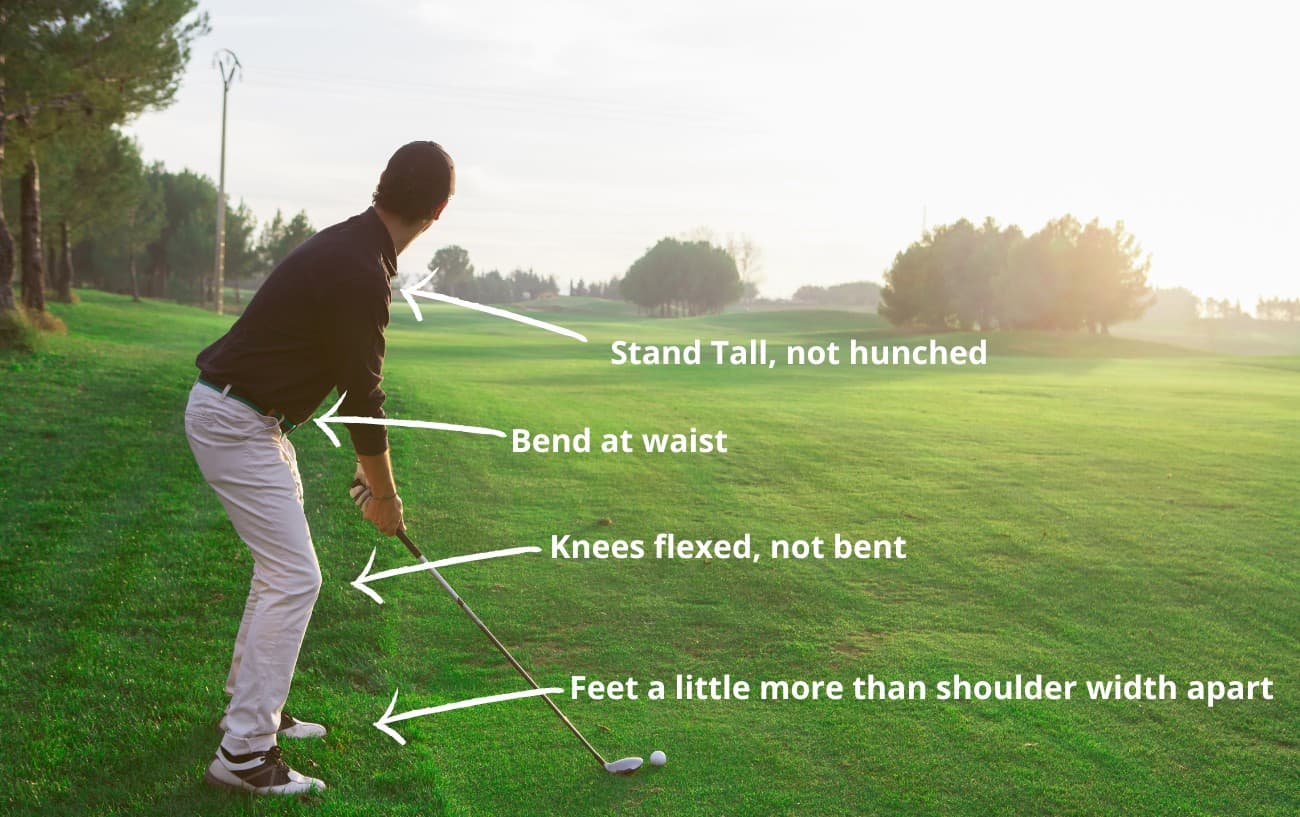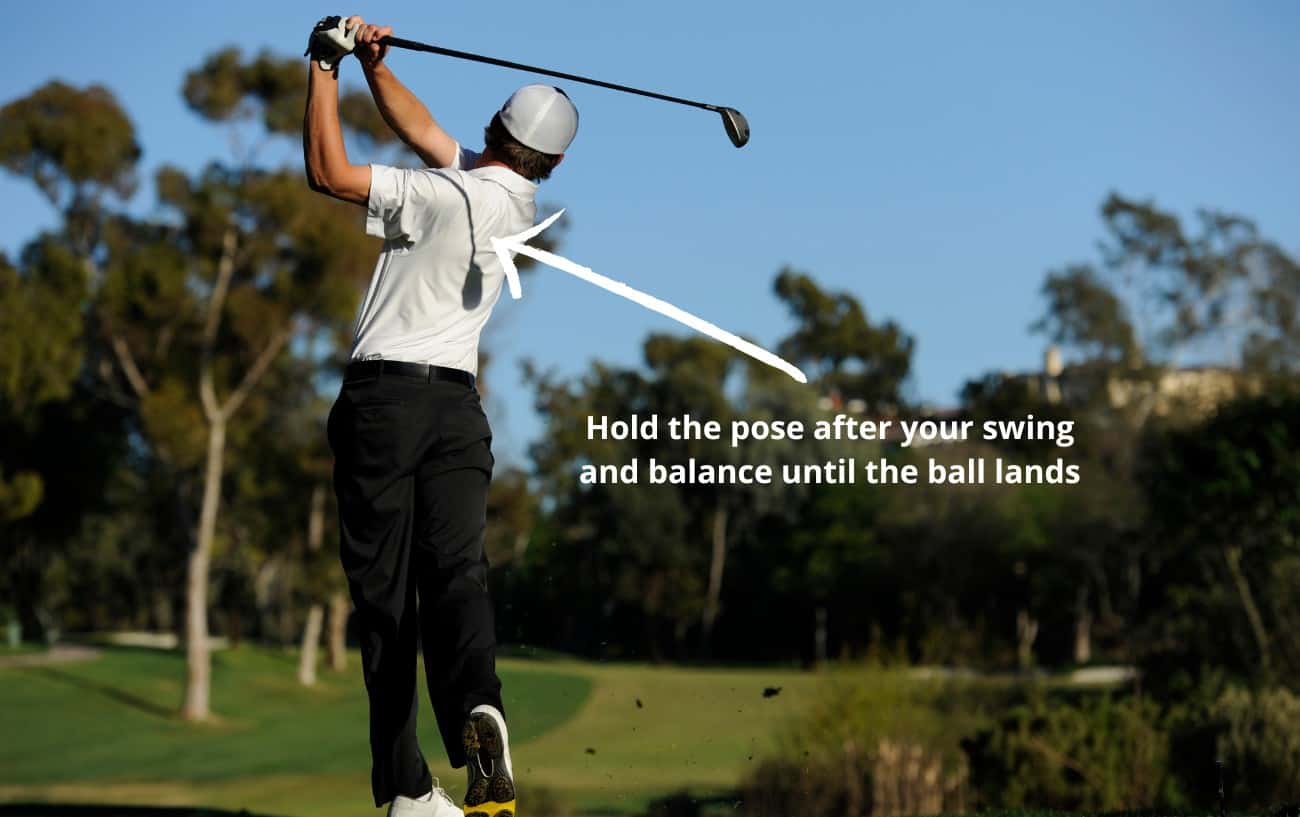Do you ever watch a golf lesson on TV or listen to a podcast and get confused by the terms? Spine angle, stay on plane, cover the ball, shallow out, etc.
This article will help you understand one of them. How to maintain spine angle in your golf swing.
This may sound like a strange swing thought, but it is quite simple. Once you understand it, you will notice it in great players.
To learn how to maintain your spine angle in your golf swing you will need to simplify your golf swing and execute solid fundamentals.
The good thing is you don’t have to figure it out by yourself. We are here to help!

Below we will define it, talk about what happens if you don’t do it, and provide some tips for maintaining your spine angle in your golf swing.
There is no time like the present. Let’s get started!
How To Maintain Spine Angle In Your Golf Swing – What does it Mean?
You know what your spine is and you understand the term angle, but what does it mean to maintain your spine angle? People love to make golf overly complex, but it can be quite simple.
When you set up to the golf ball you create an angle between your back (spine) and the ground. Ideally, you want this angle to stay the same until after impact.

Do you want to see it in action? Watch a PGA tour professional swing a golf club. We love Adam Scott’s move.
This is a fairly basic concept, but it can be hard to do. Next we will discuss what happens when you don’t know how to maintain spine angle in your golf swing!
How To Maintain Spine Angle In Your Golf Swing – What Happens When You Don’t Do It?
A better question might be, what doesn’t happen? Losing your spine angle in your golf swing can cause all sorts of issues.
Loss of power? Yes. Wild duck hook? Of course. Crazy banana slice? Check. Shanks? Sadly, also true.
There are several different reasons why you lose your spine angle. Poor weight shift can lead to a “reverse pivot” and your spine angle changes.

You could slide off the ball instead of turning – this will impact your spine angle.
You might “stand up” during your swing which will alter the angle of your spine.
Don’t despair, we think we can help. We have some things you can try to simplify your golf swing.
The next time you practice try the below tips. You can quickly learn how to maintain spine angle in your golf swing.
How To Maintain Spine Angle In Your Golf Swing – 5 Expert Tips
#1: Let’s See What We Are Working With – Video Your Swing
Before you can measure your improvement you need to establish a baseline. The good news is that all smartphones allow you to take slow-motion videos.
Ask a buddy at the driving range to film your swing and then take a few moments to review it.
Focus on your spine. What angle do you create during your initial setup (address) position? What happens to your spine during your swing?

Does it move laterally (right to left)? Does the angle change?
The golf swing is a complicated sequence of movements. Pay attention to when the angle of your spine changes.
Is it during your backswing, transition, downswing, or somewhere else?
Understanding your current golf movements is critical to learning how to maintain spine angle in your golf swing.
#2: Your Starting Posture Is Important
You can mess up your swing before you even start taking the golf club back. It is important that you start with the correct posture.
We want you to learn how to maintain spine angle in your golf swing, but you also need to start with an appropriate angle.

Quick basics for your starting posture:
- Your feet should be a little more than shoulder width apart
- Your knees should be flexed, but not overly bent
- Bend at the waist
- Stand tall – Do not roll your shoulders (hunch over)
Follow these guidelines and your swing will start with perfect posture. Now you just need to learn how to maintain spine angle in your golf swing.
#3: Turn, Don’t Slide
You want to turn around your spine, not let it slide from side to side. Ultimately, your spine doesn’t need to change position much during your swing.
There are many different swing thoughts to work on this movement, but we like to keep it simple. We recommend you simply “Tuck Your Shoulder”.

Your backswing should simply be tucking your left shoulder under your chin (right-handed players). This creates a nice turn without sliding.
A slight pause during your transition and your downswing will be untucking your shoulder and making impact with the golf ball.
This is an easy swing thought that will help you learn how to maintain spine angle in your golf swing.
#4: Proper Weight Shift
The weight shift during your swing is an important component. It helps maintain appropriate rhythm and allows you to generate power.
A common mistake for high-handicappers is a “reverse pivot”. This means your weight ends up on your back foot at impact.

A reverse pivot will cause you to lose your spine angle and hit wild shots.
If you are a right-handed player you want your weight to shift to your right foot during your backswing.
You want to “push off” your right foot and your weight should move back to the left side during your downswing. Timing is key if you want maximum power.
A proper weight shift will help you learn how to maintain spine angle in your golf swing.
#5: Balance & Hold The Pose
How well can you pose after your golf swing? Can you stay on balance until the ball lands? Learn to do this and you will hit better golf shots.
We don’t want to get into a “chicken or egg” conversation, but to make a balanced swing you must maintain your spine angle.
We love the “hold the pose” drill when you are on the driving range.

Focus on balance during and after each swing. Can you stay on balance from the time your swing starts until the ball lands?
This is a great way to learn how to maintain spine angle in your golf swing without directly thinking about your spine.
Go back to tip #1 – take a video of your golf swing while being focused on balance and we bet your spine angle will improve.
Keep it simple, stupid! We believe simple swing thoughts are always the best.

